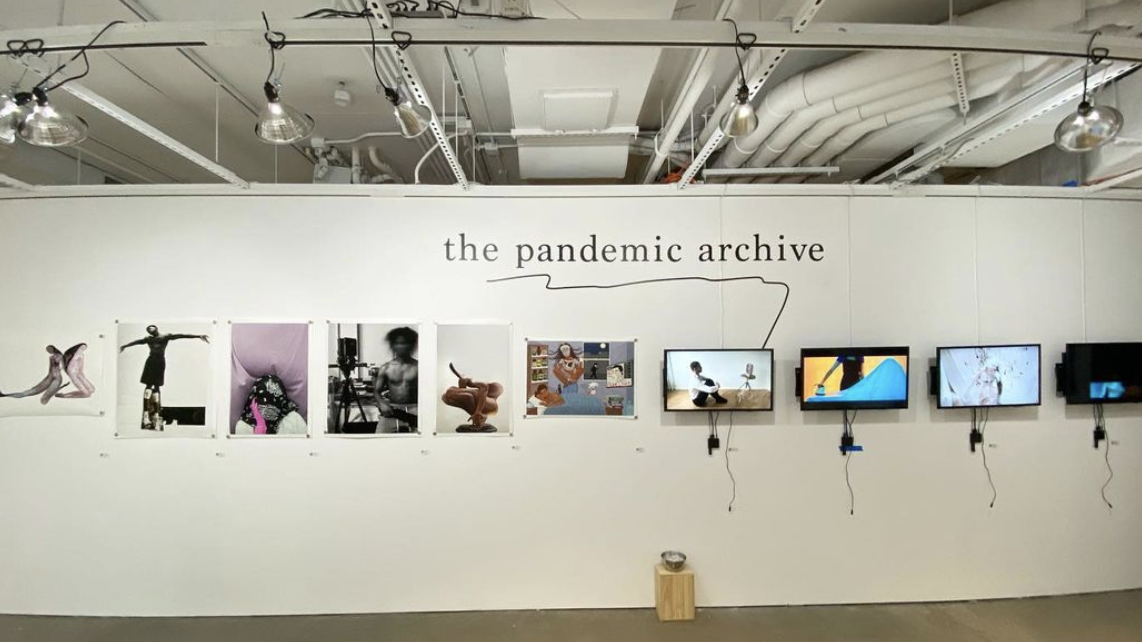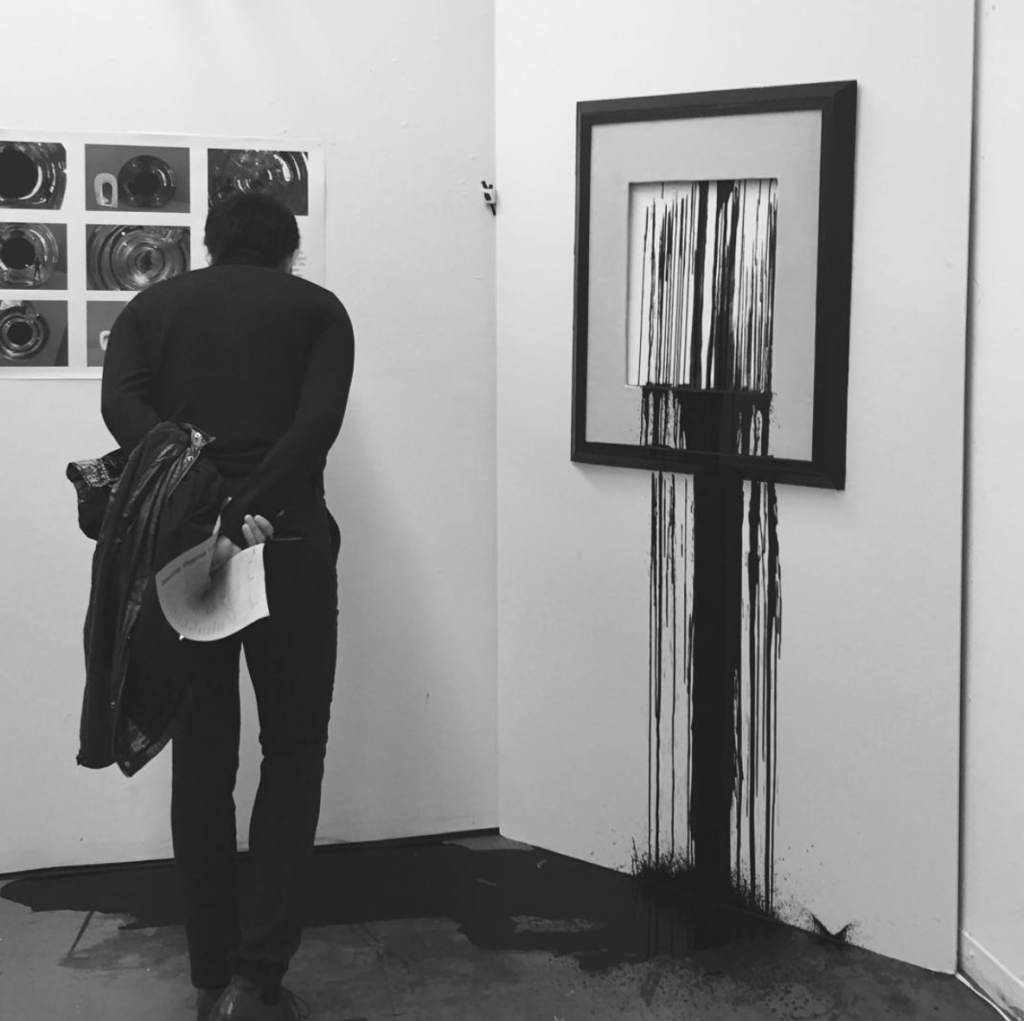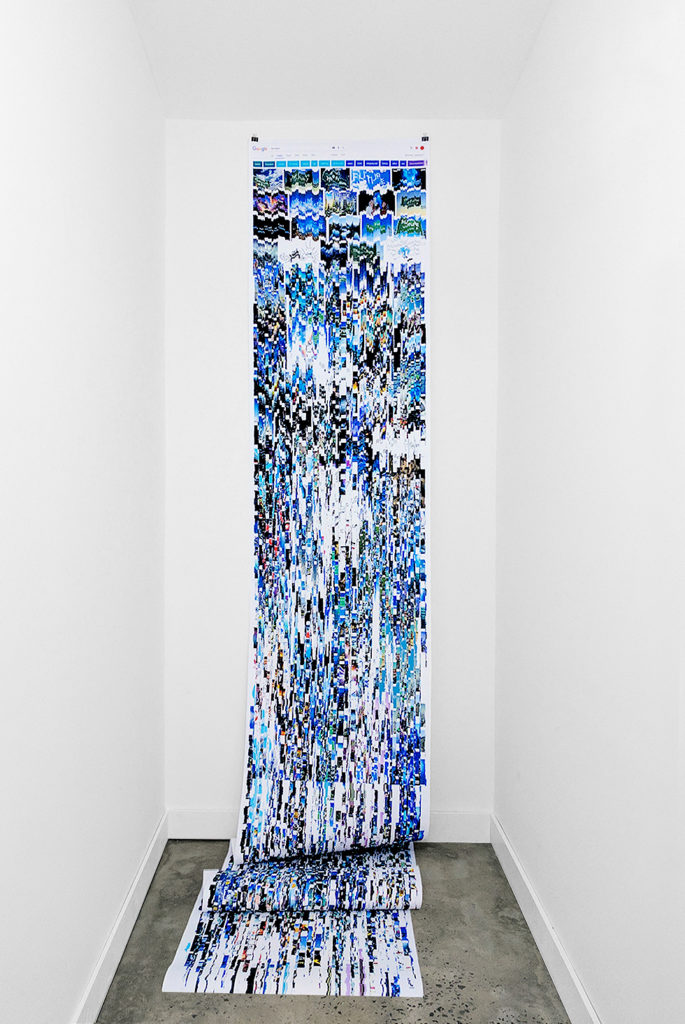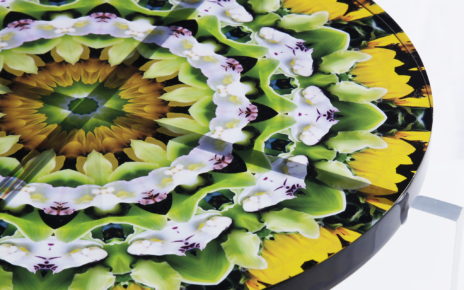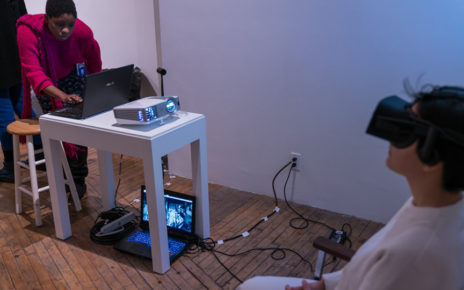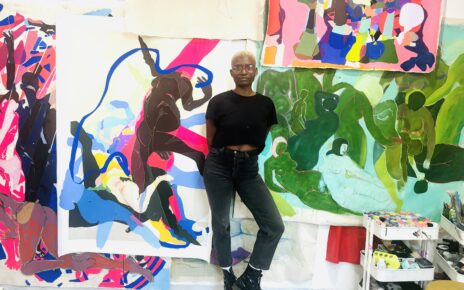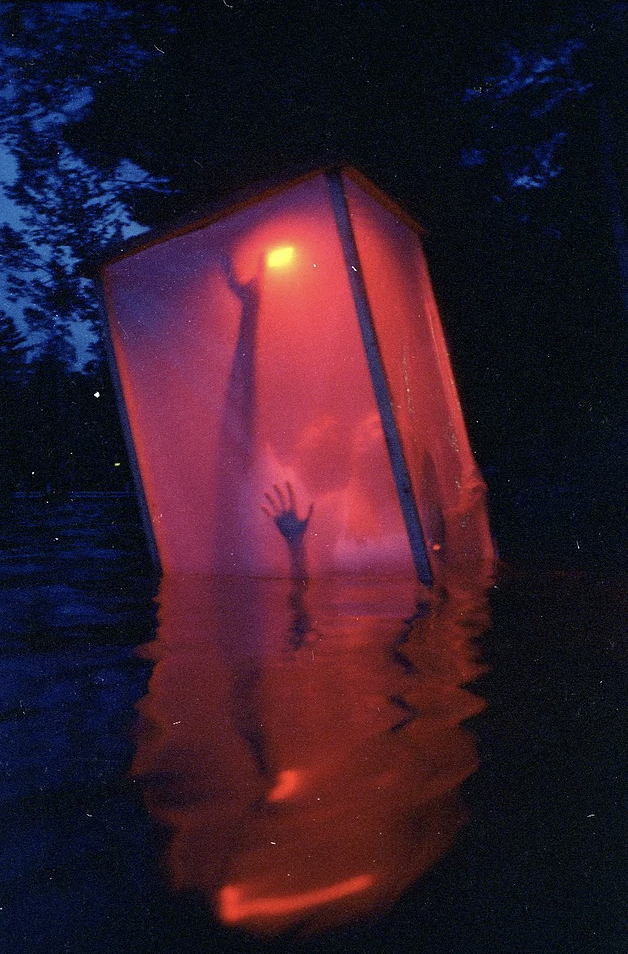
The Canvas’ Bowery storefront houses an ethical retail hub, a sustainably-sourced beverage stand, and a portal to a world of frighteningly innovative, reality-warping artistry. Snaking to the back of the shop, one can find the entrance to a multi-roomed, white-walled maze, that, from November 20th to December 15th, hosts Slow Burn NYC’s fifth group exhibition.
This is not your typical gallery–appropriate, as this has not been your typical year. It’s an escape from reality in the sense that there are psychedelic colors and choppy experimental videos. But these don’t provide escape, just decoration. This is a space where observers become participants encouraged to sink into deep analysis of what they are currently experiencing: as Earthlings in a global pandemic, as social creatures locked behind closed doors, as artists stretched in new directions to express what words alone struggle to convey. Through this lens, the selection by Slow Burn NYC questions what is organic, what is synthetic, and how they coexist.
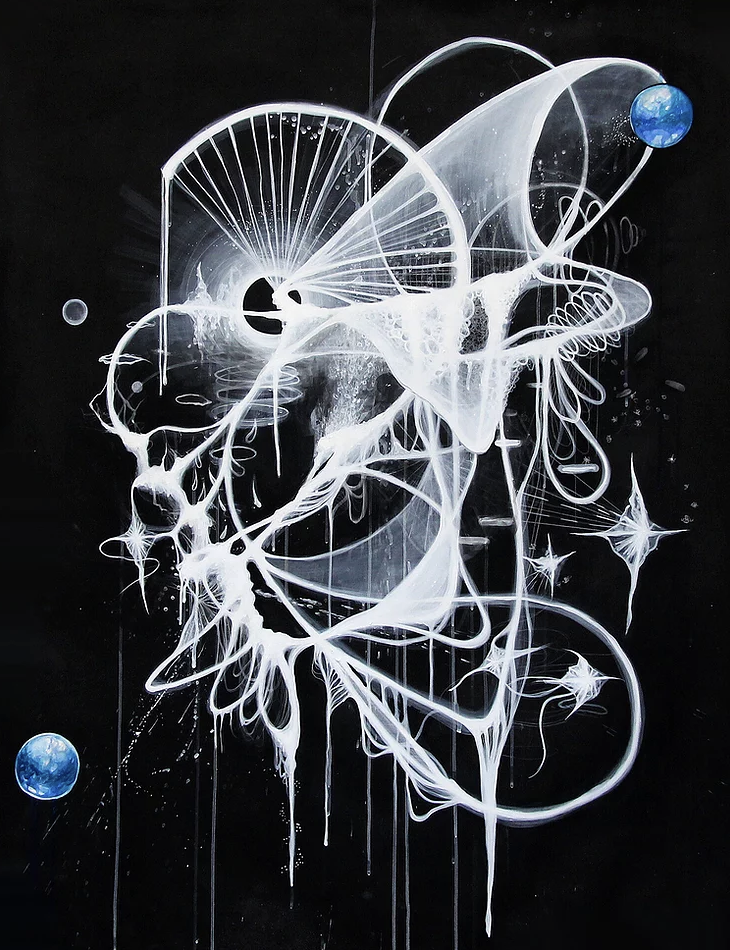
At the reins of Slow Burn is the curatorial artist duo Julia Sub and Michelle Le Nguyen, art school grads establishing a community of young, offbeat artists. “After art school, it was really hard to get into any exhibitions or galleries,” explains Sub. “So we decided to just make one of our own, and create a platform for our community.” Since 2017, and with minimal funding, the pair has been hosting their own shows. Artists featured are often friends, friends-of-friends, or connected to Slow Burn through word of mouth.
Enter: three-time Slow Burn alum Daria Zhest. A 28-year-old experimental, multi-dimensional artist from Moscow, Russia, Zhest moved to New York in 2015 to pursue her MFA from Parsons School of Design. In canvas sneakers and Adjaruli Khachapuri socks, she encapsulates the best qualities of an art grrrl: quick-witted, quirky, humble, attentive, compassionate and suuuper goofy. Two of her creations are part of the current Slow Burn: Painting (2015) and Digital Oracle (2017). Both have passed the entry test of delving into the dichotomous relationship between nature and technology.
Painting presents a plain picture frame hanging on a blank wall. At a distance, it may be mistaken for a pretentious or sarcastic art statement. But this is no abandoned pair of glasses, no Basel banana; when a person moves in front of the piece, the frame–operated by motion sensor technology–releases a deluge of black paint onto the canvas. The painting paints itself, and quite recklessly so; the wall and floor beneath are spared no mercy, and gallery guests are cautioned that not paying attention may lead to a “slippery situation and/or stained clothing.” When observers catch on to the motion sensor, they wave their arms and hop in front of the wall (which is actually part of the exhibit itself, to cleverly conceal the mechanics). After several minutes of inky substance drenching the ground, the pouring becomes streaming, becomes sputtering, spitting, and, finally, leaking, a lone drop escaping from the frame every here and there. The show concludes with a framed series of streamlined drips of paint on the wall and a six-foot-wide liquid black mirror on the floor.
Daria Zhest via Instagram
The piece’s motion sensor mechanics deem it technology, but its relation to nature takes a bit of contemplation to fully grasp. Keeping in line with the exhibition theme, Zhest’s creation responds to her own questioning of the nature of a painting: the space it traditionally exists in, the relationship between the art and the observer, and its permanence and/or temporality. “The nature of a painting is this classical framed medium. It’s supposed to be a finished work, a historical artifact, frozen in time. You’re supposed to perceive it by what it is showing you,” she explains. But with her focus on interaction and innovation, this classical notion just wasn’t cutting it anymore. “I wanted to kind of be like, ‘Well, f*** it; f*** you.’ So the movement of the viewer is what allows the piece to keep changing.”
Painting has been in a state of change since its creation in 2015. “It’s still surprising me. Should I have it paint once and leave that as the art, or refill it and keep adding more layers of paint? If I keep it one and done, it’ll be a normal painting, I guess. If I refill it over and over, then it’ll always be a work in progress.” This freedom is exciting for Zhest; through the implementation of different technologies, she can change the nature of her art itself.
The neighboring room is dominated by Digital Oracle, exactly sixty feet of scroll paper hanging from the apex of the wall. Decorated by inkjet prints, the massive work is a blown-up screenshot Zhest took in 2017 of the Google Image results for “the future.” The image is nearly untouched at the top foot or so–the search bar, the first row of images–but progressively going down the work, it becomes distorted, with chunks of one image raised up or dripping down to the next, being dragged by psychedelic claws. And while the piece comes off as an elaborate sci-fi production pulled from an acid trip, the inspiration behind it was simple. “Someone asked me, ‘What do you think the future will be?’” Zhest laughs. “I said, ‘I don’t know; let me Google it!’”
Digital Oracle (2017) by Daria Zhest
Digital Oracle is both amusing and unsettling. Situated among the exhibition’s myriad other creations contemplating the woes of modern life, it’s an unintentional yet nonetheless off-putting swig of black humor. Cognizant of the inner workings of technology, Zhest rightly predicted that the predominant results of her search would be mainly positive; feel-good graphics of blue skies and green fields populate the first few rows. “Google expects you to search for what you want to see,” she says. “And the thing is, the Google results won’t look like this anymore, even if you type in the same thing from the same computer. It changes every minute, whenever someone adds a new photo, or deletes an old one.” It’s a truly unique shot of a specific moment in Internet-time.
But most disturbing about the piece is its rapid descent from optimism to erratic eccentricity. Completely obstructing the majority of images after the sixth row, the disintegrating waterfall effect mimics the sensation of losing sight of what’s ahead. Zhest appreciates this parallel to real life: “The farther down you scroll, the more unpredictable it gets, just like how the further into the future we try to imagine, the crazier we think it’ll become.”
The remainder of the Slow Burn curation plays with topics similar to Zhest’s, but also addresses issues specific to 2020. A designated area is reserved for the works of The Pandemic Archive, a global platform and digital collective of works made in quarantine. Quests to find some beauty in the monotony of homebound existence. Transformations of mundane household tasks into vibrant, saturated short films. Memorials honoring lives lost to the virus, to
police brutality, to systemic racism; tributes honoring the strength of those who are most vulnerable to all three. The collection is sobering and evokes gratitude for the simple gift of life, even–and especially–in times when gratitude may be the last thing on one’s mind.
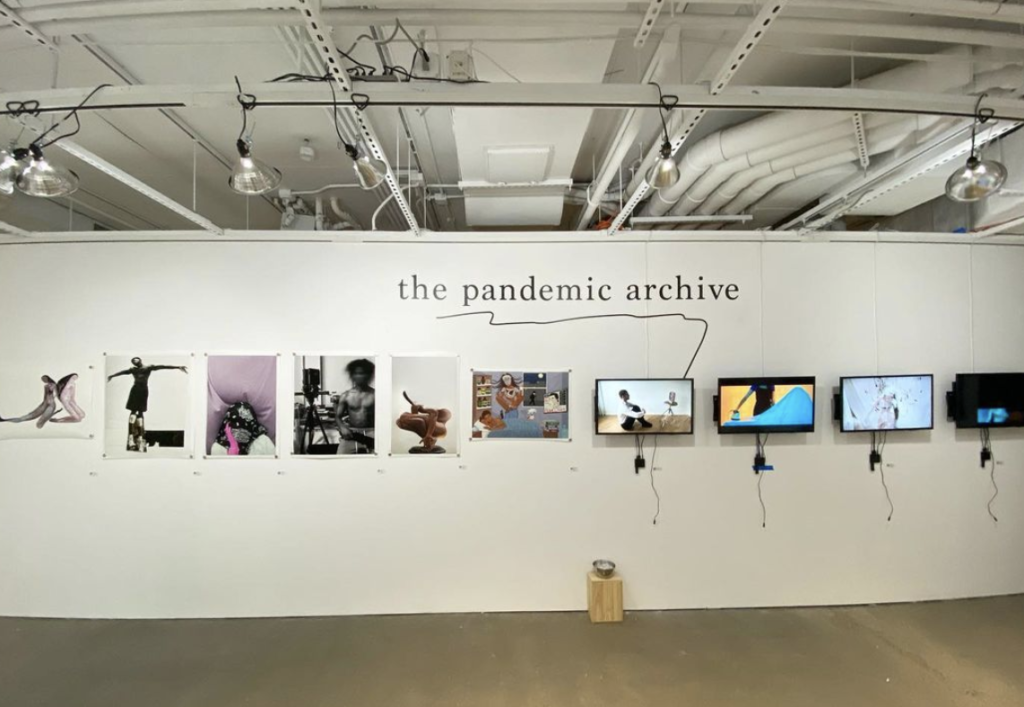
While the official theme of the exhibition is the intersections of nature and technology, the underlying message seems to be how we 21st-century humans keep ourselves going despite uncertainty. Most of the works project an element of fear: of the future, of isolation, of an invisible illness, of death. Yet visitors will not leave with an impression of cowardice, but rather one of cleverness and courage. As the artists share samples of their personal methods of coping, viewers might just find the nugget of inspiration they need to pick up their productivity, embrace their emotions, and continue to live fully and fearlessly. The only way we will get through these times is by continuing to live each day to its greatest (and safest) extent. “You have to scroll down to see the future,” Zhest smirks. “Get it? Scroll…?”
Nature | Technology II, presented by Slow Burn NYC, is on display at The Canvas by Querencia’s Bowery location from November 20th-December 15th. Admission is free. Masks and social distancing are mandatory.
